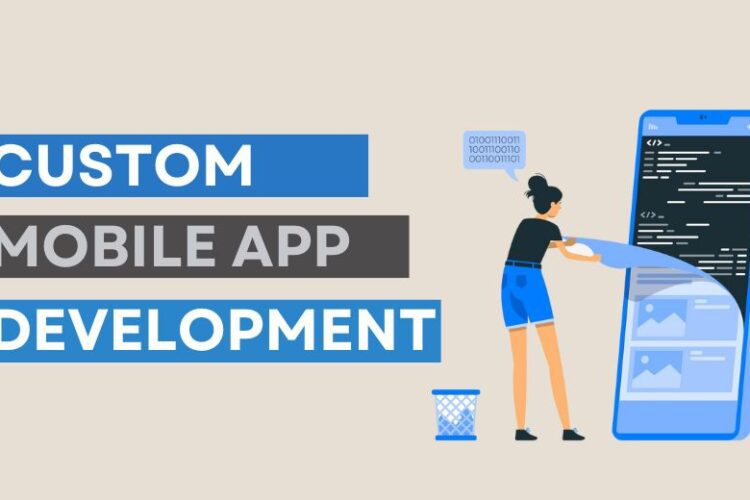In today’s digital landscape, selecting the right cloud applications development company is crucial for businesses to stay competitive and efficient. The decision-making process falls on the shoulders of business owners, managers, and professionals who are responsible for implementing cloud applications within their organizations. This article provides a comprehensive guide to help decision-makers navigate through the selection process and make informed choices that align with their business needs and objectives.
Understanding Business Needs and Objectives
The first step in choosing the right cloud applications is gaining a deep understanding of the organization’s current challenges and pain points.
By assessing existing systems and processes, decision-makers can identify specific business goals and objectives.
This understanding serves as a foundation for aligning cloud applications with the unique requirements of the business.
Researching Available Cloud Applications
Decision-makers must explore the vast array of cloud applications available in the market. They should consider different types of cloud applications and their suitability for the specific industry.
Researching industry-specific solutions helps identify applications that have been developed with the particular needs of the business sector in mind.
Additionally, reading reviews and gathering recommendations from trusted sources can provide valuable insights into the strengths and weaknesses of different cloud applications.
Evaluating Key Factors
Several key factors need to be evaluated when selecting cloud applications.
Scalability and flexibility are essential to ensure that the chosen applications can grow with the business and adapt to changing needs.
Security and data privacy are critical considerations to protect sensitive information. Integration capabilities play a crucial role in seamlessly connecting the cloud applications with existing systems.
User-friendliness and ease of adoption are vital to ensure smooth implementation and user satisfaction.
Finally, cost-effectiveness and return on investment (ROI) should be carefully assessed to justify the financial investment.
Prioritizing Must-Have Features
Each business has unique requirements, and decision-makers must prioritize the must-have features for their organization.
By understanding the essential features needed to address specific challenges and achieve business objectives, decision-makers can shortlist the cloud applications that align most closely with their requirements.
Identifying specific functionality requirements ensures that the selected applications offer the necessary tools and capabilities to meet the organization’s needs effectively.
Considering Vendor Reputation and Support
The reputation and experience of the cloud application vendors play a significant role in the decision-making process.
Decision-makers should assess the credibility and track record of potential vendors, ensuring that they have a proven history of delivering reliable and high-quality solutions.
Evaluating customer support options is crucial to receive timely assistance and resolve any issues that may arise.
Seeking references and case studies from existing customers provides valuable insights into the vendor’s ability to meet expectations and deliver satisfactory results.
Trial Period and Pilot Testing
Testing the shortlisted cloud applications is an essential step in the selection process.
Decision-makers should set up a trial period or pilot project to evaluate the applications firsthand.
This allows users to explore the functionalities, test the usability, and assess the compatibility of the applications with their workflows.
Gathering feedback from users and stakeholders during this phase helps in making an informed decision based on real-world experiences.
Making an Informed Decision
To make an informed decision, decision-makers must carefully weigh the pros and cons of each shortlisted option.
Considering long-term scalability and future needs is crucial to avoid outgrowing the chosen applications too quickly.
It is also important to involve key stakeholders in the decision-making process to gain diverse perspectives and ensure organizational alignment.
Implementation and Training
Planning for seamless implementation is vital to minimize disruption and maximize the benefits of the chosen cloud applications.
Decision-makers should establish a clear implementation plan, allocate resources, and communicate effectively with the implementation team and users.
Providing necessary training and support to users ensures a smooth transition and empowers them to utilize the applications effectively.
Monitoring and measuring the success of the implementation process enables decision-makers to identify area for improvement and make necessary adjustments.
Regular Evaluation and Adaptation
The journey doesn’t end with implementation. Decision-makers should continuously evaluate the effectiveness of the chosen cloud applications and adapt them as needed. Regularly assessing the performance and user satisfaction helps in identifying any areas of improvement or changes required. Staying updated with new features and advancements in cloud application technology ensures that the organization continues to leverage the latest innovations to drive efficiency and growth.
Conclusion
Choosing the right cloud applications is a critical decision that impacts the overall productivity and success of a business. By following this comprehensive guide, decision-makers can navigate through the selection process with confidence. By understanding business needs, researching available options, evaluating key factors, and involving key stakeholders, decision-makers can make informed choices that align with their business goals. With proper implementation, training, and ongoing evaluation, organizations can harness the power of cloud applications to streamline operations, enhance collaboration, and drive sustainable growth.




